Basil Pesto is a very popular pasta topping around the world. Pesto originates from Genoa in Italy and today we are sharing a classic pesto and a nut free basil and spinach pesto.
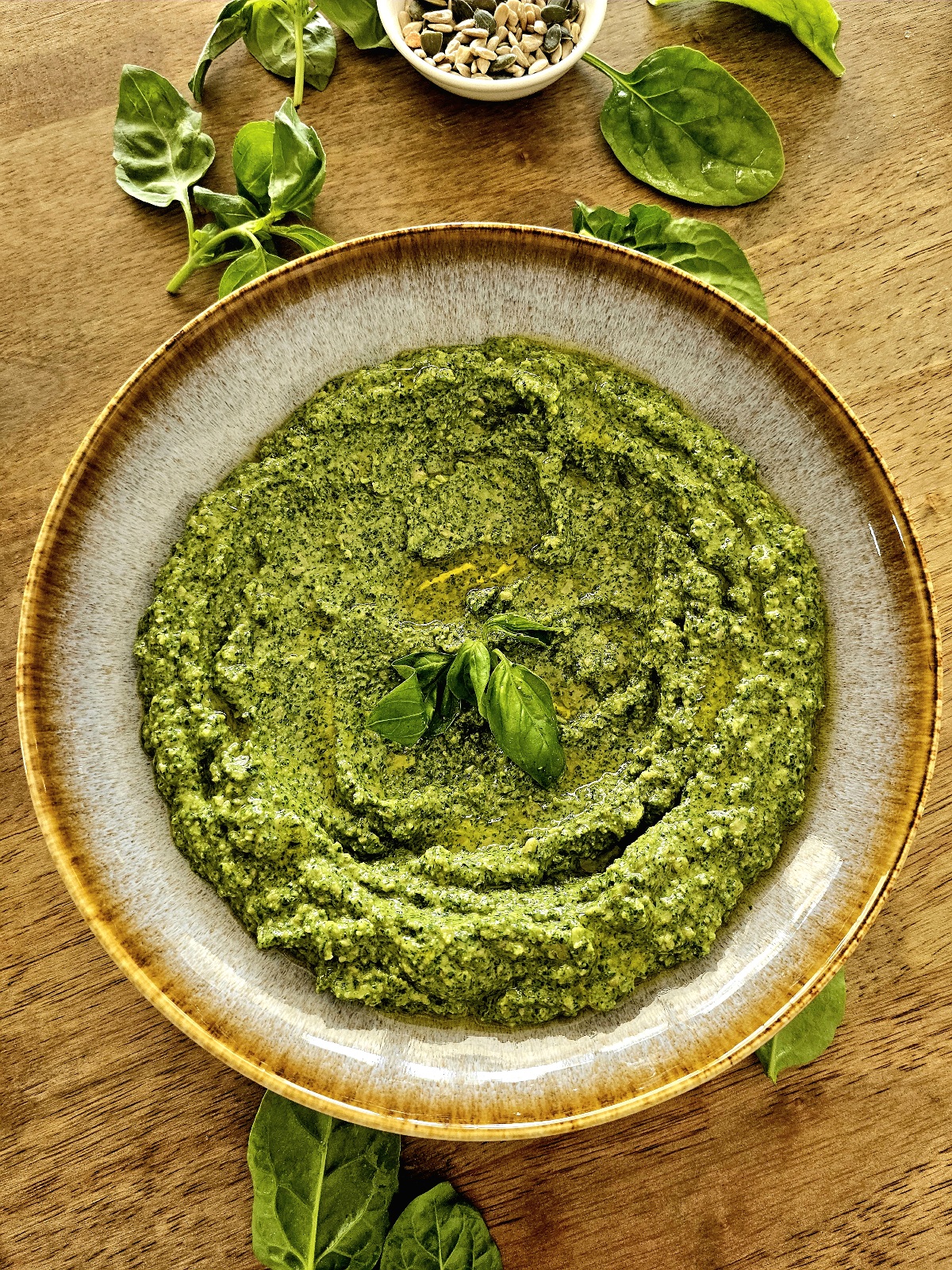
Spoon it over chicken, salads, dips, pasta, crusty bread and more. The best part, you're using fresh ingredients and you get to control the quantities to your taste. Basil pesto can be made in a food processor, mortar and pestle and a Vitamix all pesto just different textures.
Why You Will Love These Basil Pesto Recipes
- There is diversity in making them allowing you to use what's affordable to you.
- Anyone can make pesto since there is no cooking required
- The versatility in how to use it is endless, see ideas below.
Basil Pesto Frequently Asked Questions
Do you wash basil leaves before making pesto?
Yes, it's important to rinse fresh basil and baby spinach when making pesto. There is no need to soak them up in water but they do need a good rinse under the tap. Simply shake them dry in a colander or use a salad spinner to dry them and continue with the recipe.
What kind of nuts to use for basil pesto?
We've used everything from pine nuts, almonds, walnuts, cashews, pistachios and macadamia nuts. In this recipe below, we are sharing a nut free basil pesto.
What pasta goes well with pesto?
Spaghetti is the most popular pasta type used for basil pesto but you can also use fusilli, penne, farfalle (bow-tie pasta) or any of your favorites.
What can I substitute for nuts?
Sunflower seeds and pumpkin seeds
Can I make pesto without nuts and without seeds?
Yes, you can make pesto with breadcrumbs and omit the nuts and seeds.
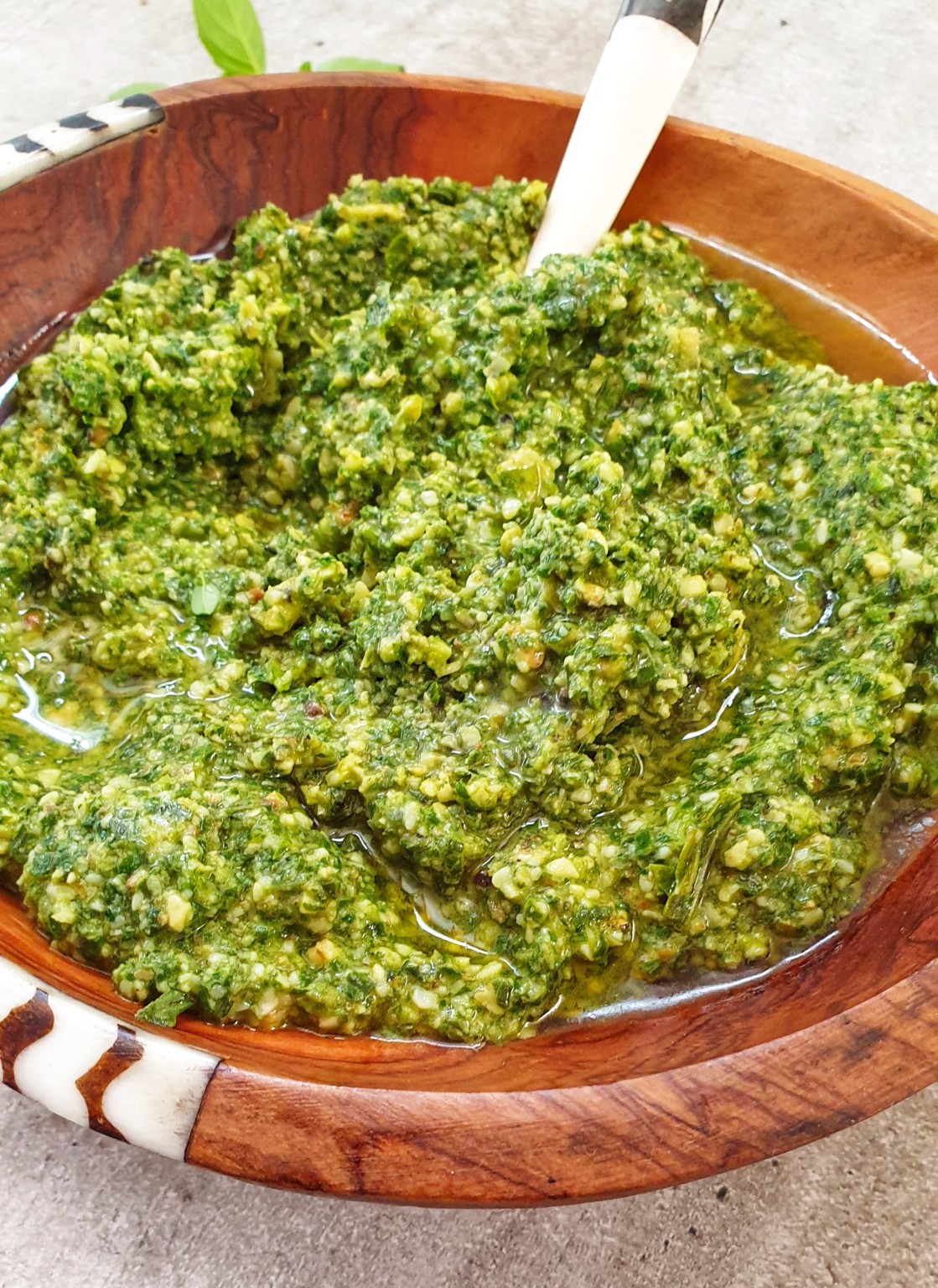
Basil Pesto Ingredients
The recipe card below has two recipes so check them out. These ingredients are for the nut free version.
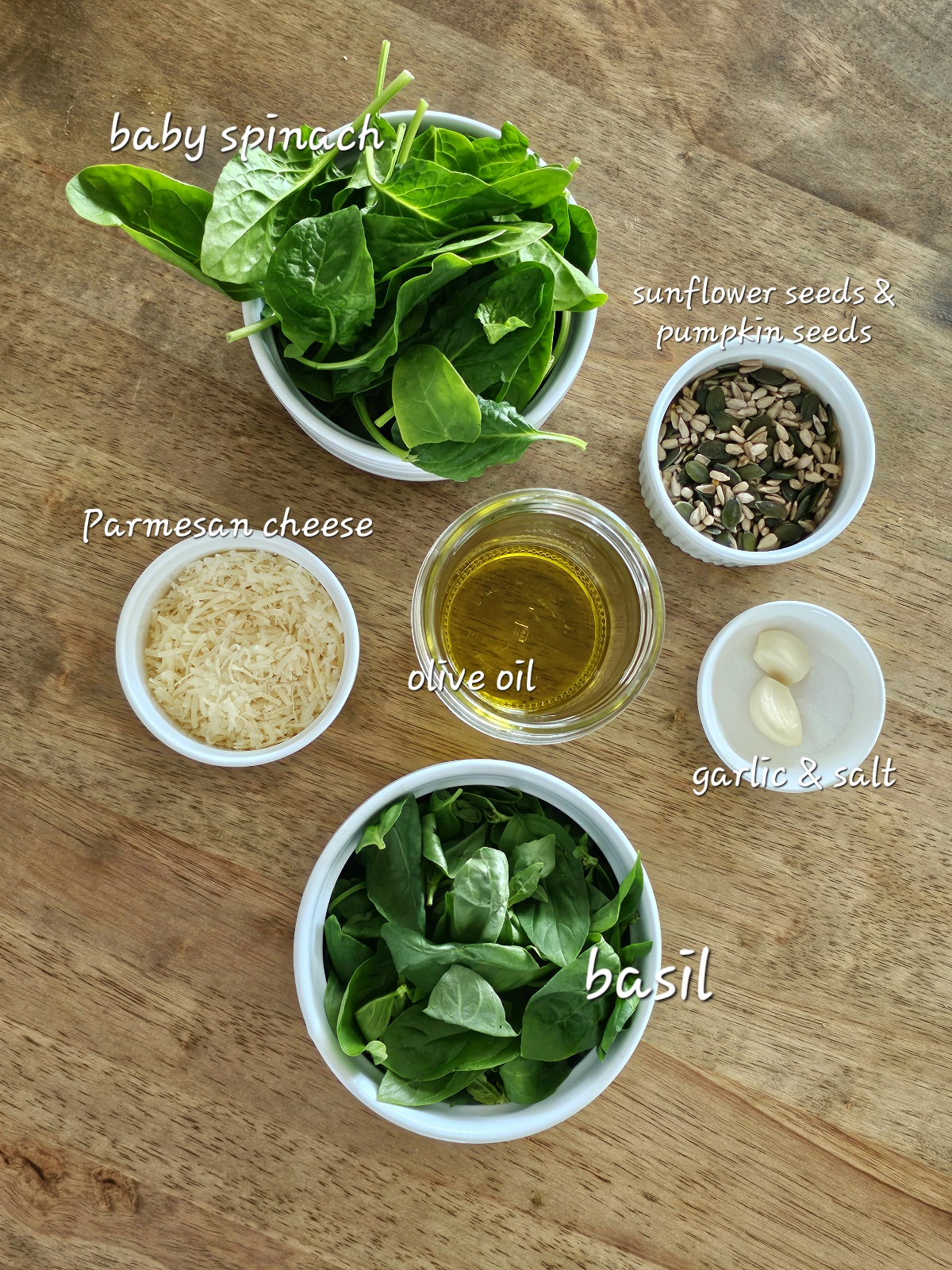
How To Make A Nut Free Basil and Spinach Pesto
Prep: It's best to wash the baby spinach and the basil before using to remvoe any dirt that you might not see. Use a strainer or salad spinner to dry the leaves.
Combine: Add the basil, baby spinach, salt, garlic, half the cheese and less than half the oil into the food processor. I find that starting with part of the oil helps the food processor mix the ingredients. The cheese tends to clog the ingredients so I prefer adding it in two parts.
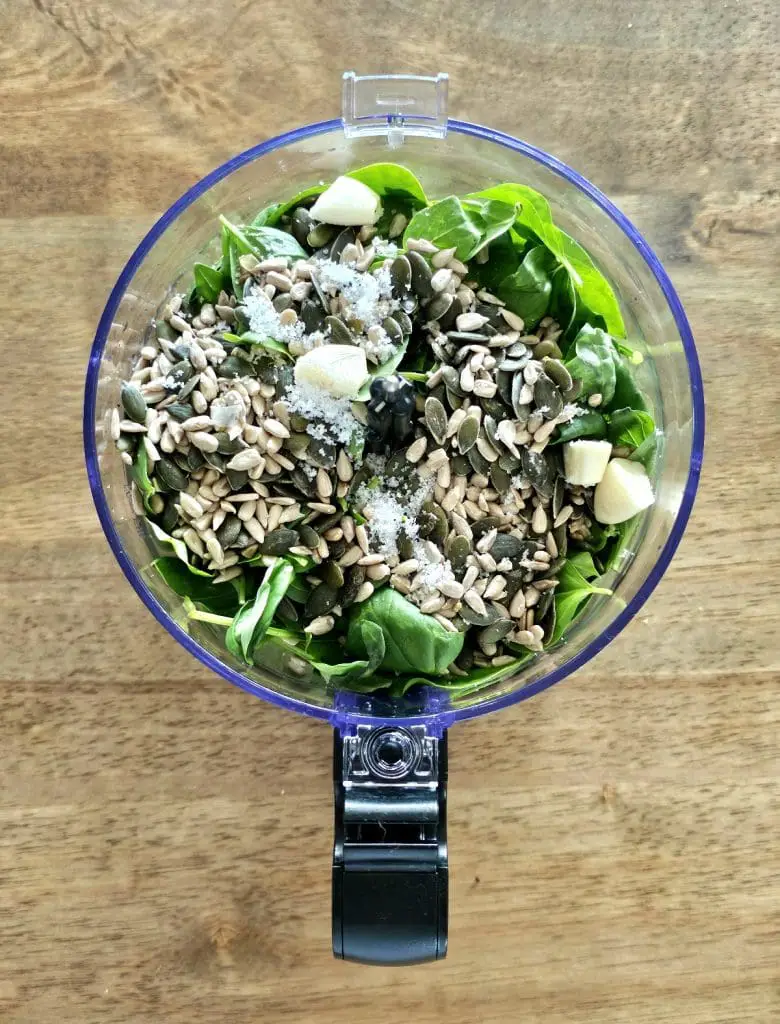
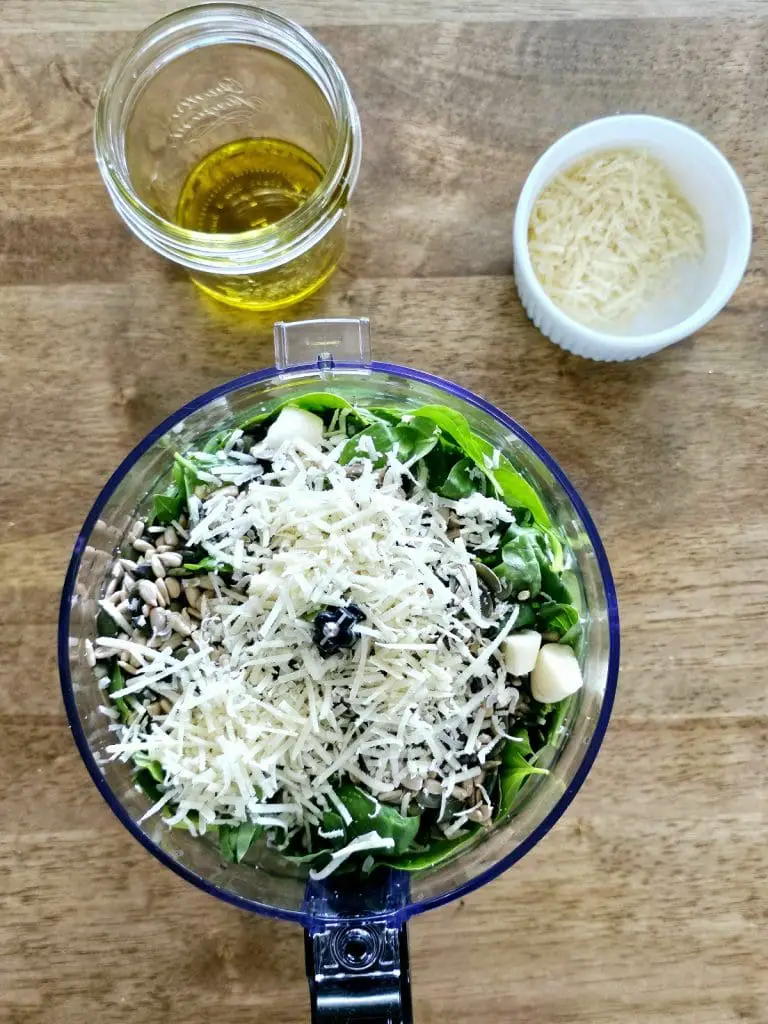
Scrape and mix: Use a spatula to scrape down the sides of the bowl and pulse a couple of times before adding the remaining cheese. Place the lid on and pour the remaining olive oil through the nozzle while the food processor is spinning. Taste and adjust the seasoning.
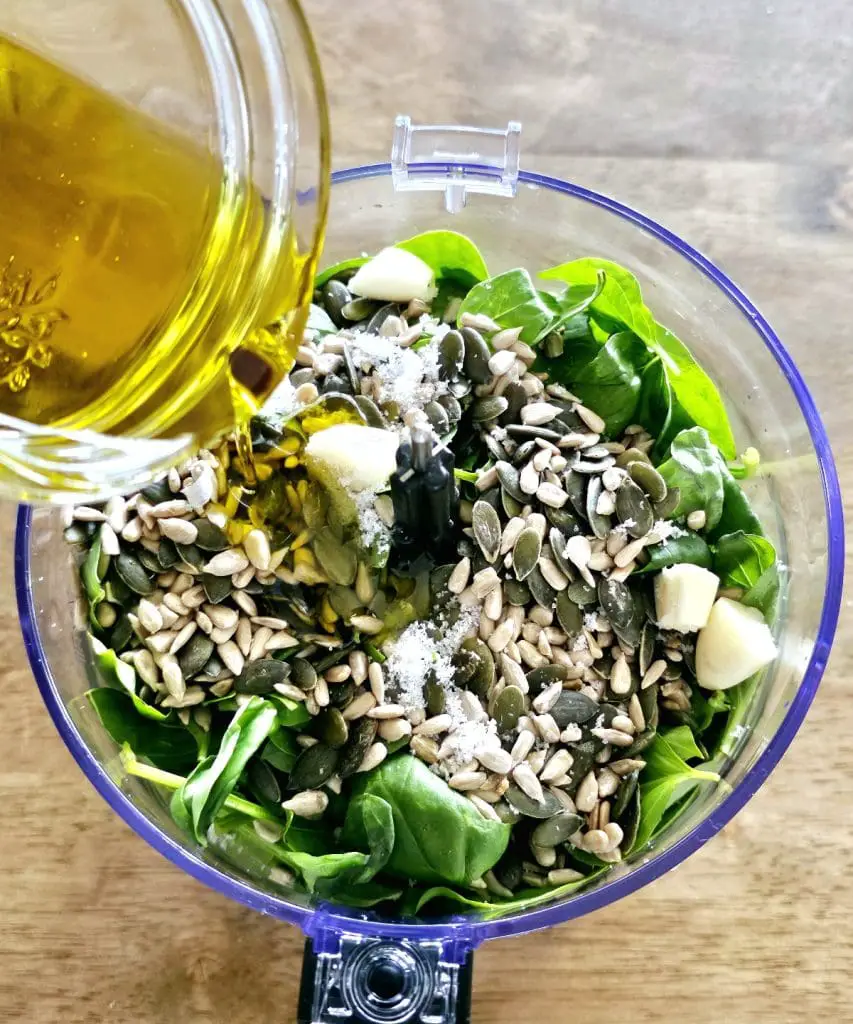
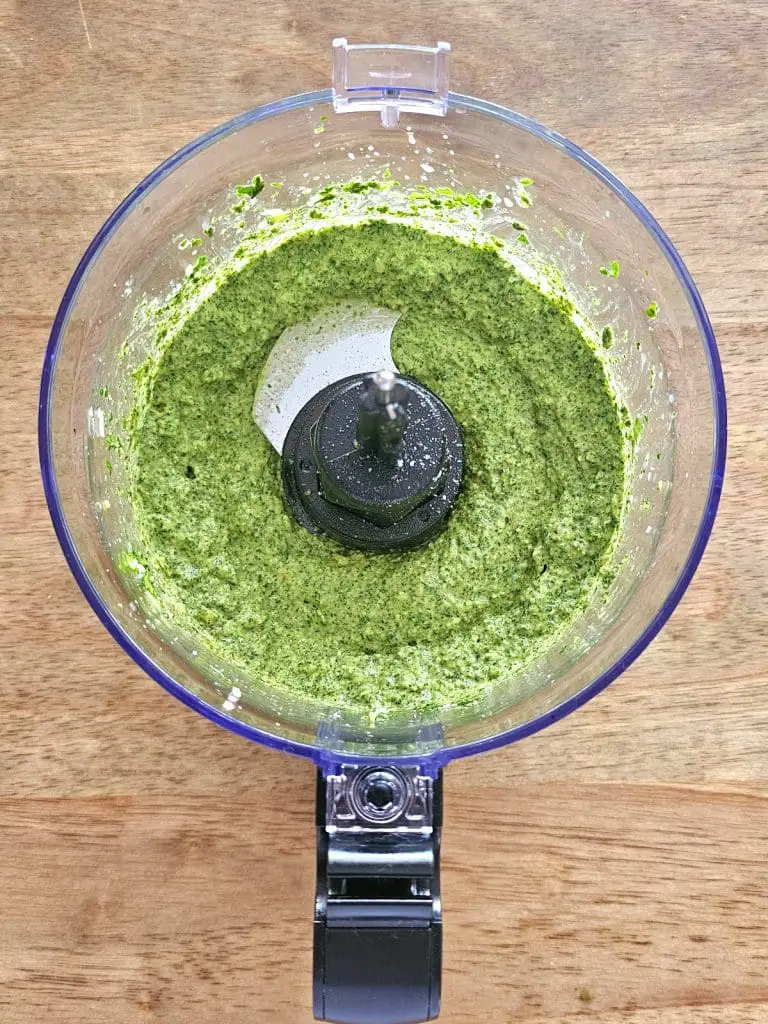
Is Fresh Lemon Important When Making Basil Pesto?
Lemon is not part of the classic Italian basil pesto but I find that just a tablespoon of fresh lemon juice brightens the taste of pesto.

Which olive oil to use for basil pesto?
There are very few ingredients in basil pesto and as with most Italian classics the ingredients are a few with the focus being on quality. A poor quality olive oil will produce a poor quality pesto, it really is that simple. We use this extra virgin olive oil.
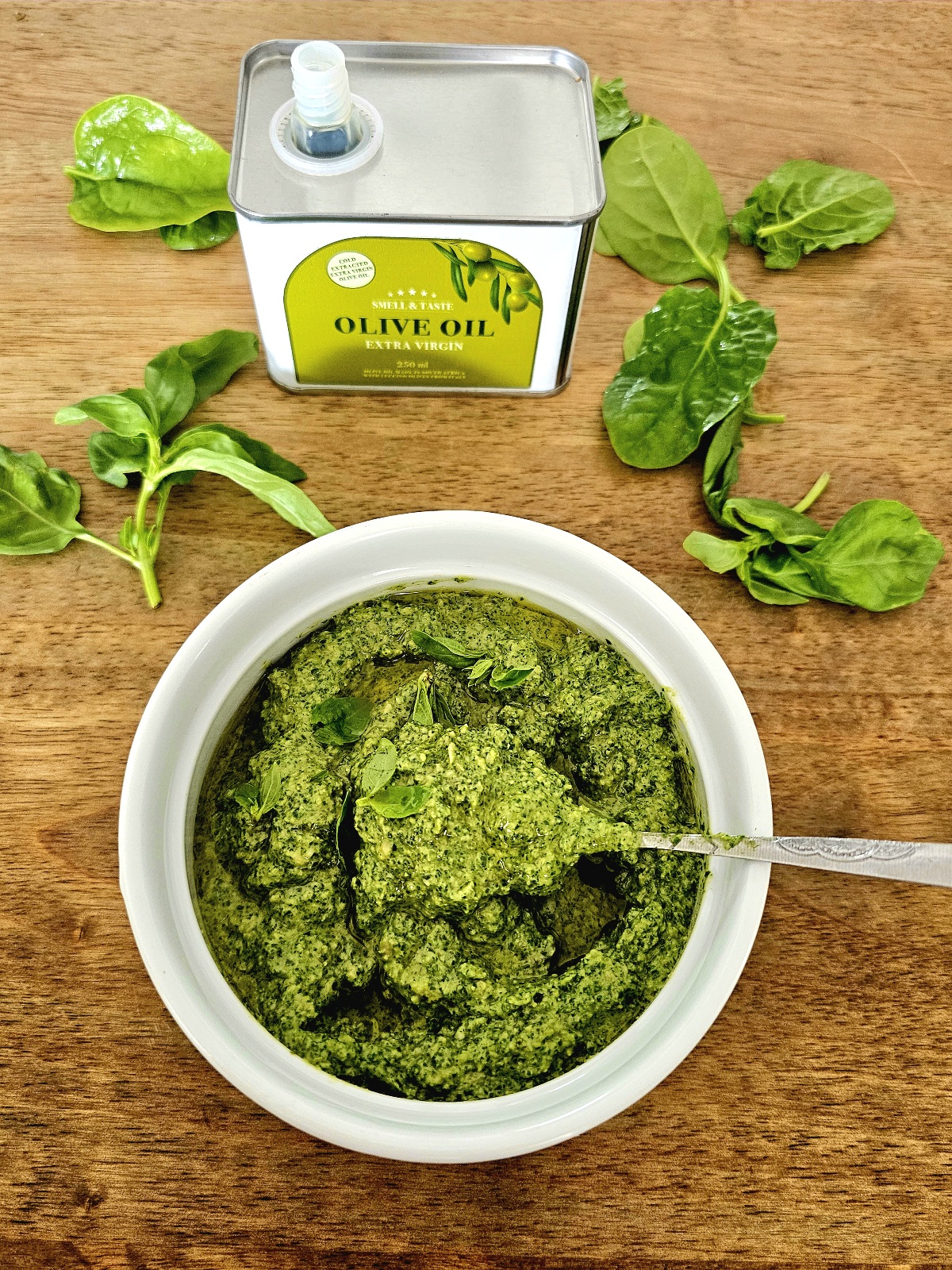
Classic Basil Pesto Ingredients
Basil: Use fresh basil leaves and if you are buying them, it's best to try and use them the same day.
Parmesan cheese: Freshly grated, meaning you grate the block at home not store-bought grated.
Salt: For flavor and structure.
Garlic: 2 large cloves are enough.
Pine nuts: If you can dry toast them, go ahead it adds flavor to the pesto recipe.
Would you like to save this?
I'd like to receive tips & recipes from Anosmic Kitchen.
Olive oil: Use the best extra virgin quality olive oil. We use these olive oils.

How To Make A Classic Basil Pesto
Combine Add the remaining ingredients into a food processor except the olive oil.
Olive oil Pour the oil oilve oil in gradually through the nozzle and mix until the ingredients are blended. Taste for salt, add about a tablespoon more of extra virgin olive oil.
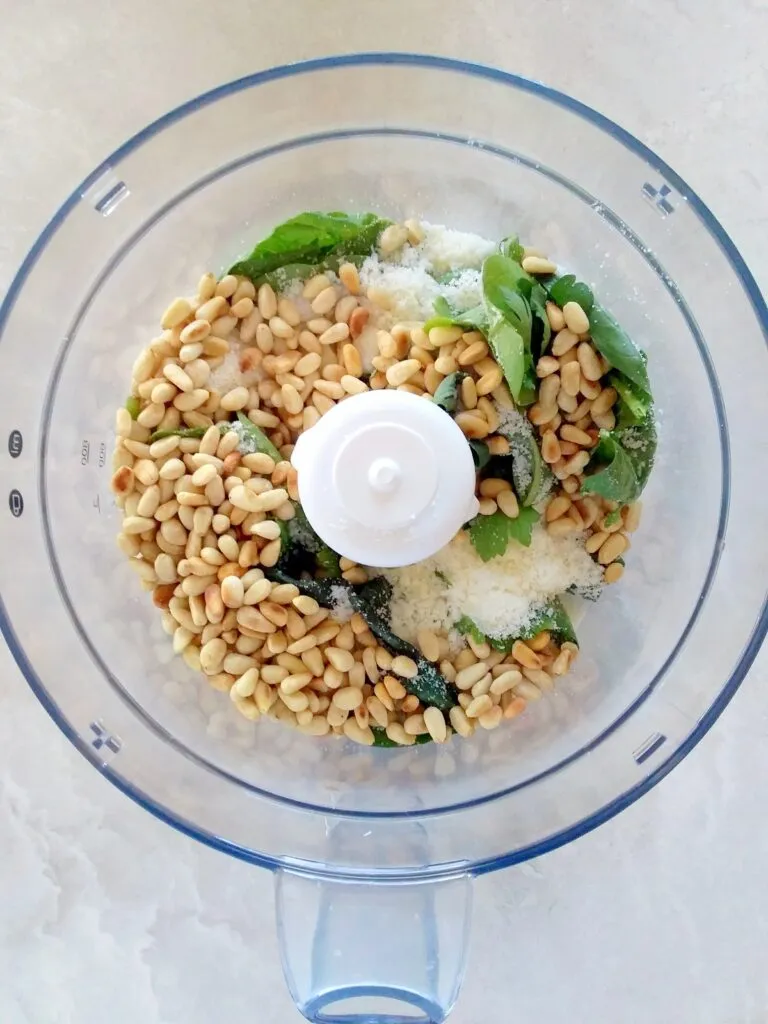

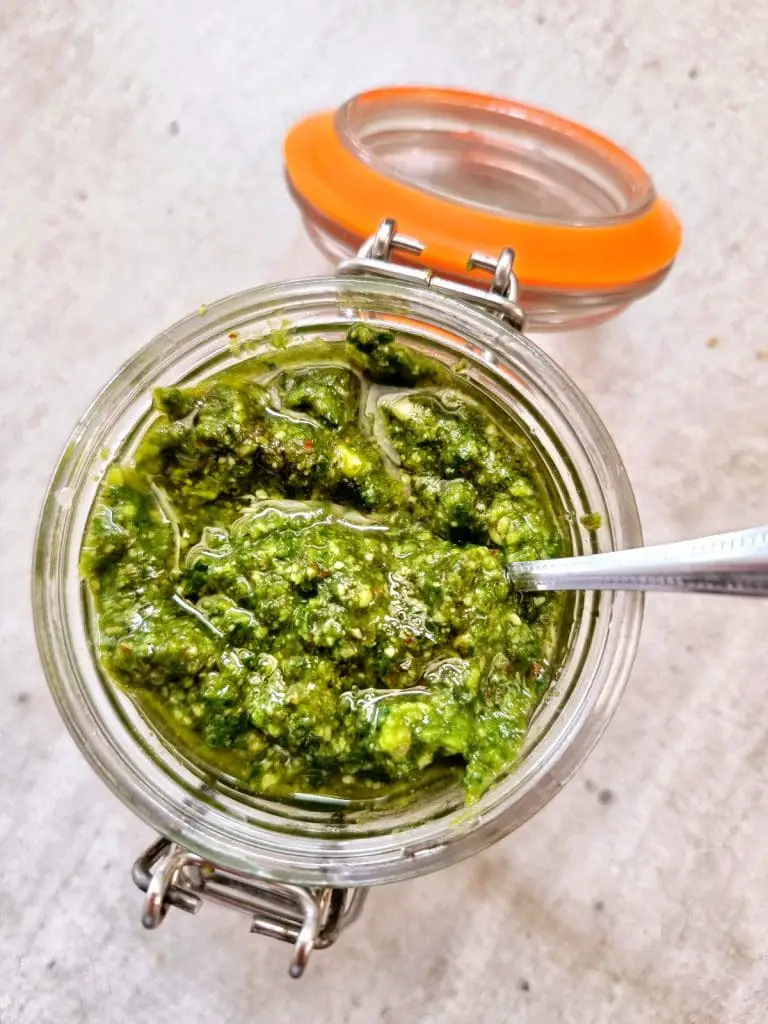
Tips for a classic pesto
- Try dry toasting the pine nuts for extra flavor.
Basil Pesto Variations
So many different easy ways to make basil pesto, here are some alternatives to pine nuts;
- Almonds
- Walnuts
- Cashews
- Pistachios
Fresh Basil - This pesto can also be prepared with a number of fresh greens. See below for a list of alternatives although remember this will evidently change the taste and it will then be a kale pesto, or spinach pesto, mixed herbs pesto (made them all????) but it's no longer a basil pesto.
- Parsley
- Spinach
- Kale
- Mint
- Coriander
- Rocket
You'll get different colors, vibrancy, textures and this is all due to things like ingredients, equipment and photography. Sometimes I couldn't be bothered to pull out my food processor and all I do is get all the ingredients into the blender. As long as you don't over blend because you want a pesto not a puree, but then you can turn it into a dip! Endless options.
Cheese - Parmesan is the cheese to use for this pesto recipe but I've also used Pecorino Romano it just depends what's available at the time, there are no hard and fast rules.

TIP! If you are in the process of making pasta with your pesto, remember that the best way to thin you pesto out if it's too thick is pasta water! So instead of adding more oil add pasta water.
Each time I make something like pesto, the recipe changes based purely on what ingredients are available. The same goes with the fresh herb. This morning I had a fresh herb that was going to lose the freshness if not used and you don't always want to add it into a cooked meal or salad so some kind of pesto is always a good idea. Don't waste your fresh herbs if you have them toss them into the food processor and make a green pesto!
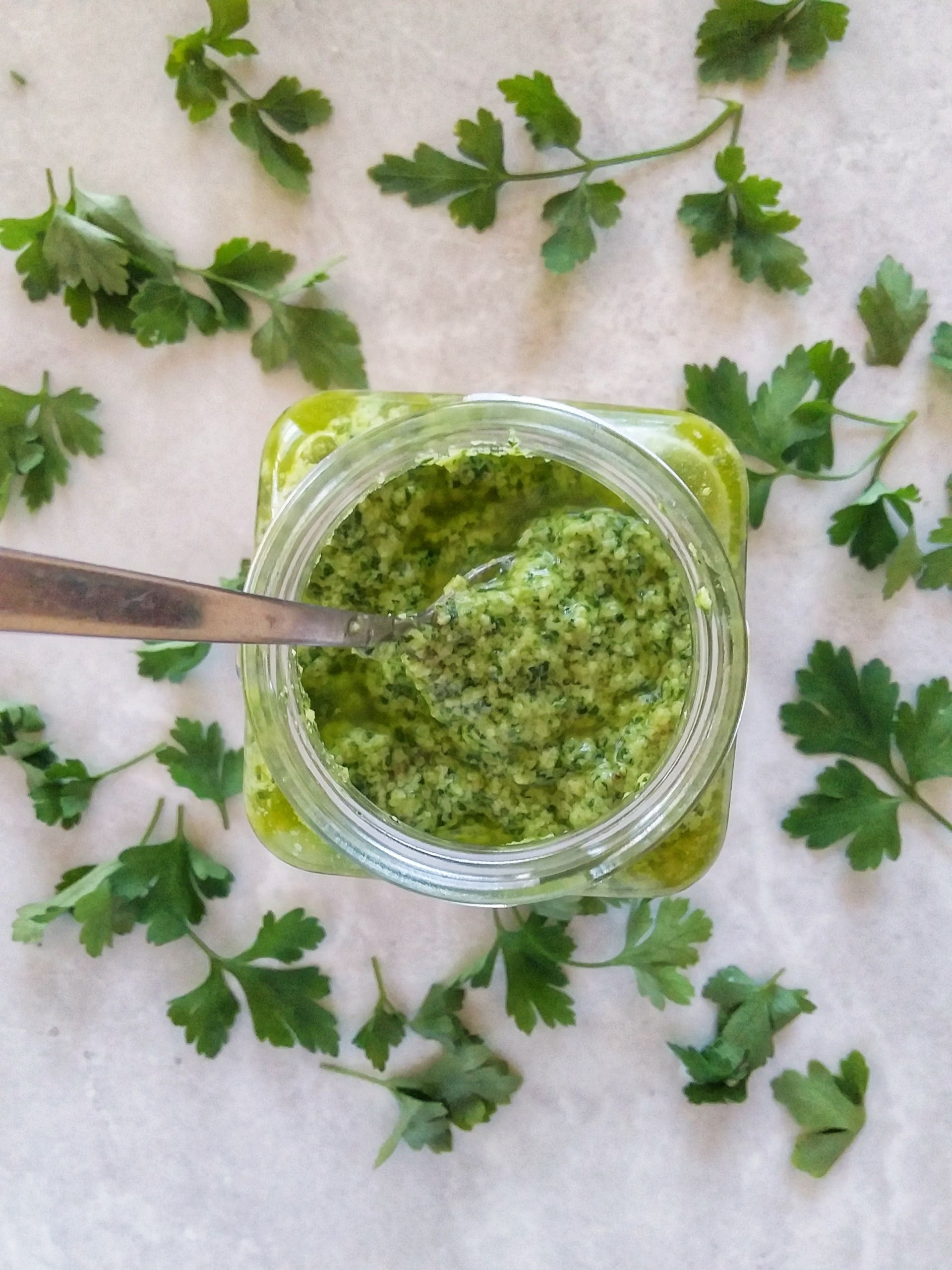

Storage
You can store your pesto in the fridge in a sealed container or you can also cover it with cling wrap. If you use cling wrap gently press it down onto the pesto to prevent any air entering and turning it a dark brown color. It will go a good 3 or so days in the fridge.
Always make sure that's a drizzle of olive oil covering the surface of the pesto so it doesn't go dark or dry out. Just before using it, stir the oil into the rest of the pesto and then repeat with the oil drizzle and sealable cover when returning it to the fridge.
Freezing
I cannot confirm the freezing part because when we make basil pesto, we make just enough and then we use it for everything and I mean everything! See below for ideas on how to use basil pesto. But if ever I had to freeze it I would have to do it without the cheese (since cheese doesnt freeze well) use cubes, whether it was smaller ice cubes or the large souper cubes (love them for my tomato sauce). That should freeze for a couple of weeks.
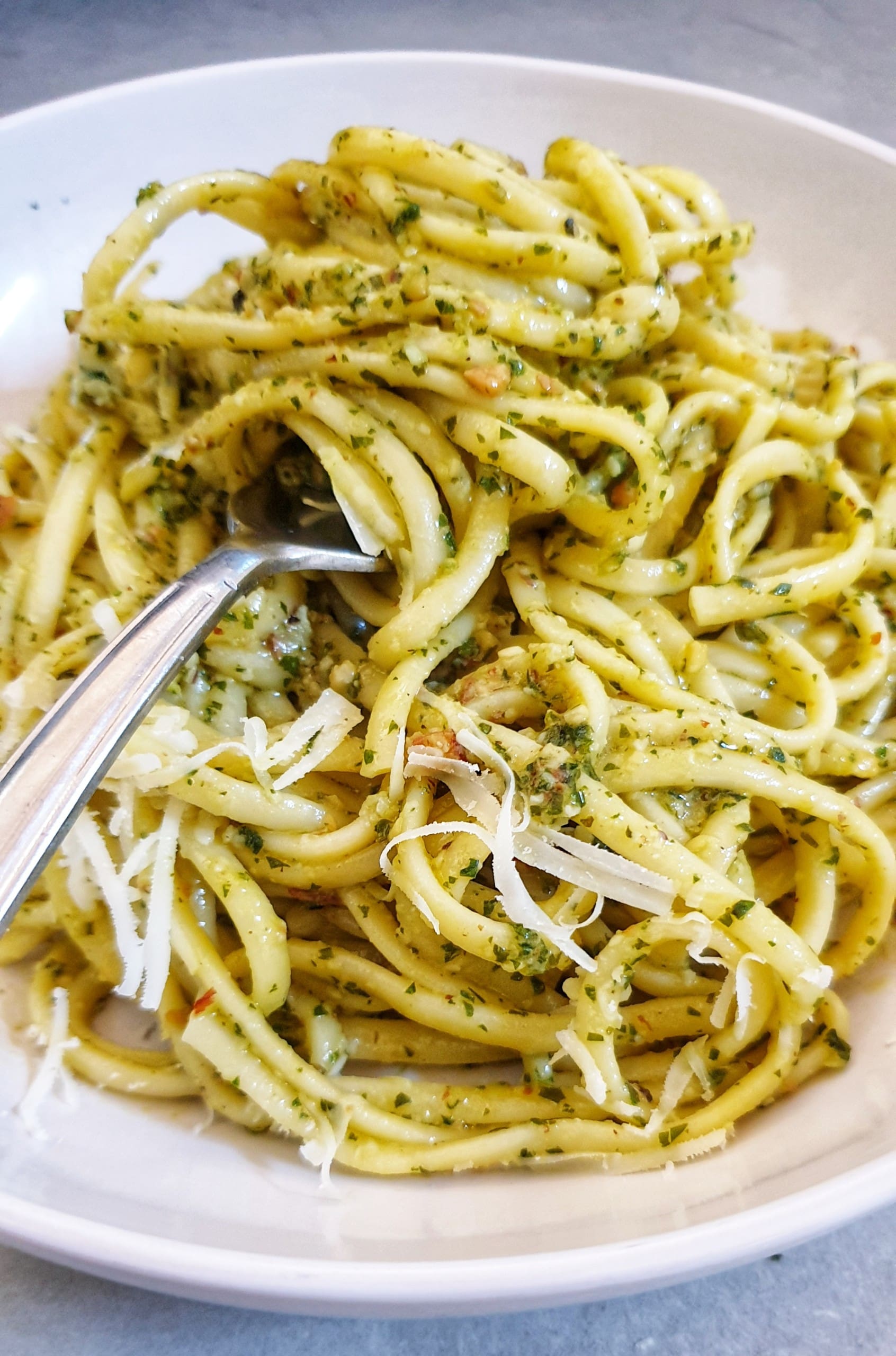
What I've learned over the years of making pesto is that it's never the same. It comes out different because of a few elements like firstly the ingredients, then the appliance as mentioned earlier. Do you know that even that basil leaves are very different and that also changes the pesto. Point is if you're worried about it not coming out the same, that's a good thing it's probably getting better each time.
Which Appliance To Use For Pesto?
Mortar and pestle
Food processor
Vitamix (use the tamper to help you combine the ingredients)
Nutribullet (other blenders) Add everything into the blender, stop to scrape the sides of the bowl and adjust the taste. Blend in pulses not all at one time so that you can control the texture.
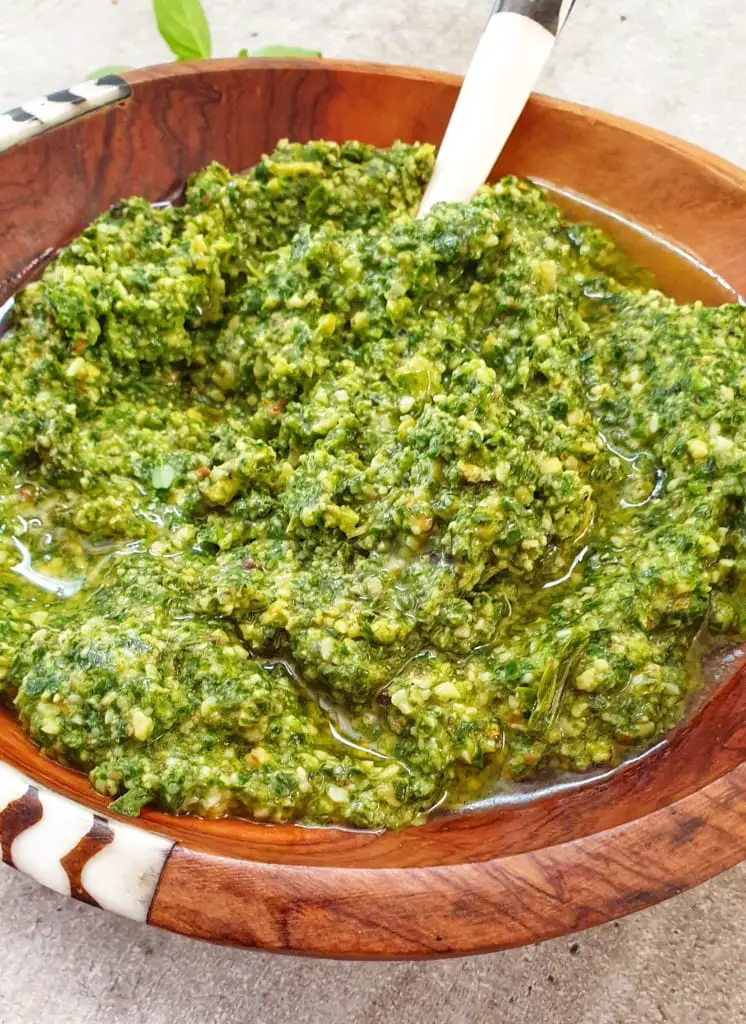
How To Use Basil Pesto
Everyone adds pesto to pasta and so should you because it's delicious but here a few other ideas;
- Tomato Basil Pesto Tart, Exceptional!
- Tomato and Basil Pesto Toast
- Pesto and Melanzane Rotolo
- Pesto Pasta Salad
- Spinach and Cheese Tarts
- Fish Bake Recipe in Basil Pesto, Parmesan and Tomato
More Sauces and Dips
Knowing how to use a sauce not only make it, can be the difference between a good and great meal.
- What Sauce To Put On A Tortilla Wrap - Our favorite braai (barbecue) sauce!
- Creamy Mushroom Sauce - Creamy goodness! Serve it with this pasta
- Homemade Cranberry Sauce - Try it with chicken
- Romesca Sauce - robust and great with meat, veg and pasta or these spinach and cheese tarts.
- Chimichurri Sauce - best with steak
- Avocado Salad Dressing - so good with salads and veggies
If you haven’t yet subscribe to my newsletter and follow along on my YouTube, Pinterest and Instagram for updates and definitely join my new Facebook Group!
More Pesto Recipe Ideas
- Tomato Basil Pesto Tart, Exceptional!1 Hours 10 Minutes
- Spicy Oven Baked Chicken Bites With Wraps25 Minutes
Basil Pesto
Ingredients
Basil Pesto (Classic)
- 2 cups fresh basil leaves
- ¼ cup pine nuts toasted is suggested for a richer flavor
- 2 cloves garlic peeled and halved
- ½ cup extra virgin olive oil
- ½ cup Parmigiano-Reggiano or Pecorino Romano grated
- ¼ teaspoon salt
Nut Free Basil & Spinach Pesto
- 2 cups fresh basil
- 2 cups baby spinach
- 2 garlic cloves peeled and halved
- ¼ teaspoon salt
- ½ cup sunflower & pumpkin seeds
- ½ cup parmesan cheese grated
- ½ cup extra virgin olive oil
Optional
- 1 tablespoon freshly squeezed lemon juice
Instructions
Classic Basil Pesto
- Add some of the ingredients and pulse: Pulse the fresh basil, pine nuts, salt, halved garlic cloves into the bowl of a food processor.
- Scrape the bowl: Pulse and stop to scrape down the sides of the bowl with a rubber spatula to make sure that all the ingredients are being mixed.
- Olive oil: Pour the olive oil in slowly while the food processor is running through the nozzle. Stop scrape and pour.
- Taste and serve: Taste for salt, add about a tablespoon of olive oil if needed.
Nut Free Basil & Spinach Pesto
- Prep: Wash the baby spinach and the basil leaves and shake them dry in a strainer or a salad spinner.
- Food processor: Pack the spinach, basil, sunflower & pumpkin seeds, garlic, salt and half the cheese into the bowl of a food processor.
- Olive oil: Add less than half of the oil to help start the food processor.
- Pulse and scrape: Pulse and stop to scrape down the sides of the bowl with a rubber spatula and add the remaining cheese. Place the lid on and pour the remaining olive oil through the nozzle with the food processor running.
- Season and adjust: Stop and scrape and check if you need the food processor to go a few more seconds for a smoother finish. Taste for seasoning.
Notes
Food processor (most popular)
Vitamix (use the tamper to help you combine the ingredients)
Nutribullet (other blenders) Add everything into the blender, blend and stop to scrape the sides of the bowl while you adjust the taste. Blend in pulses not all at one time so that you can control the texture. Nuts and Seeds Nuts and seeds can be very bland so for added flavor and richness, my suggestions would be to toast them first before using.


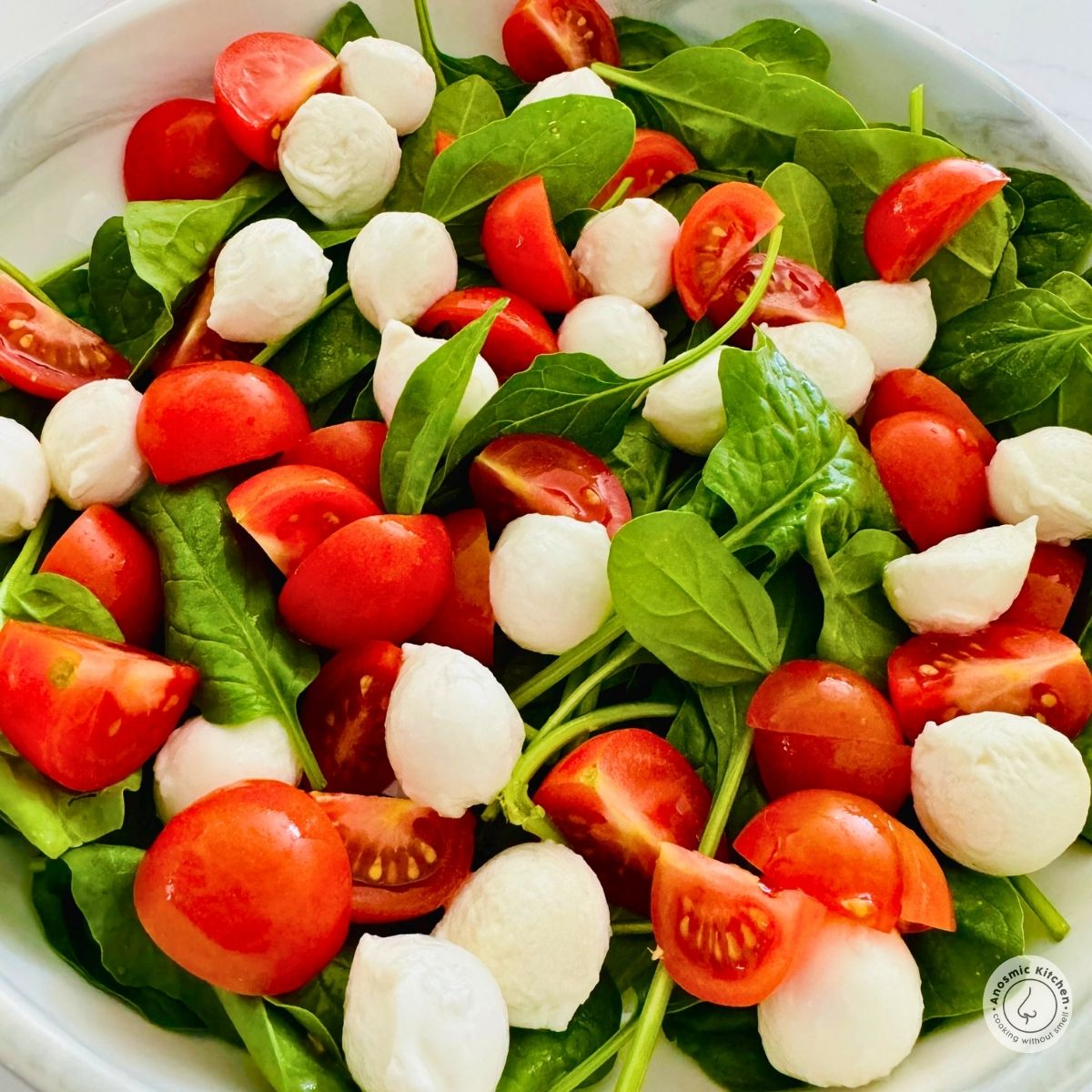

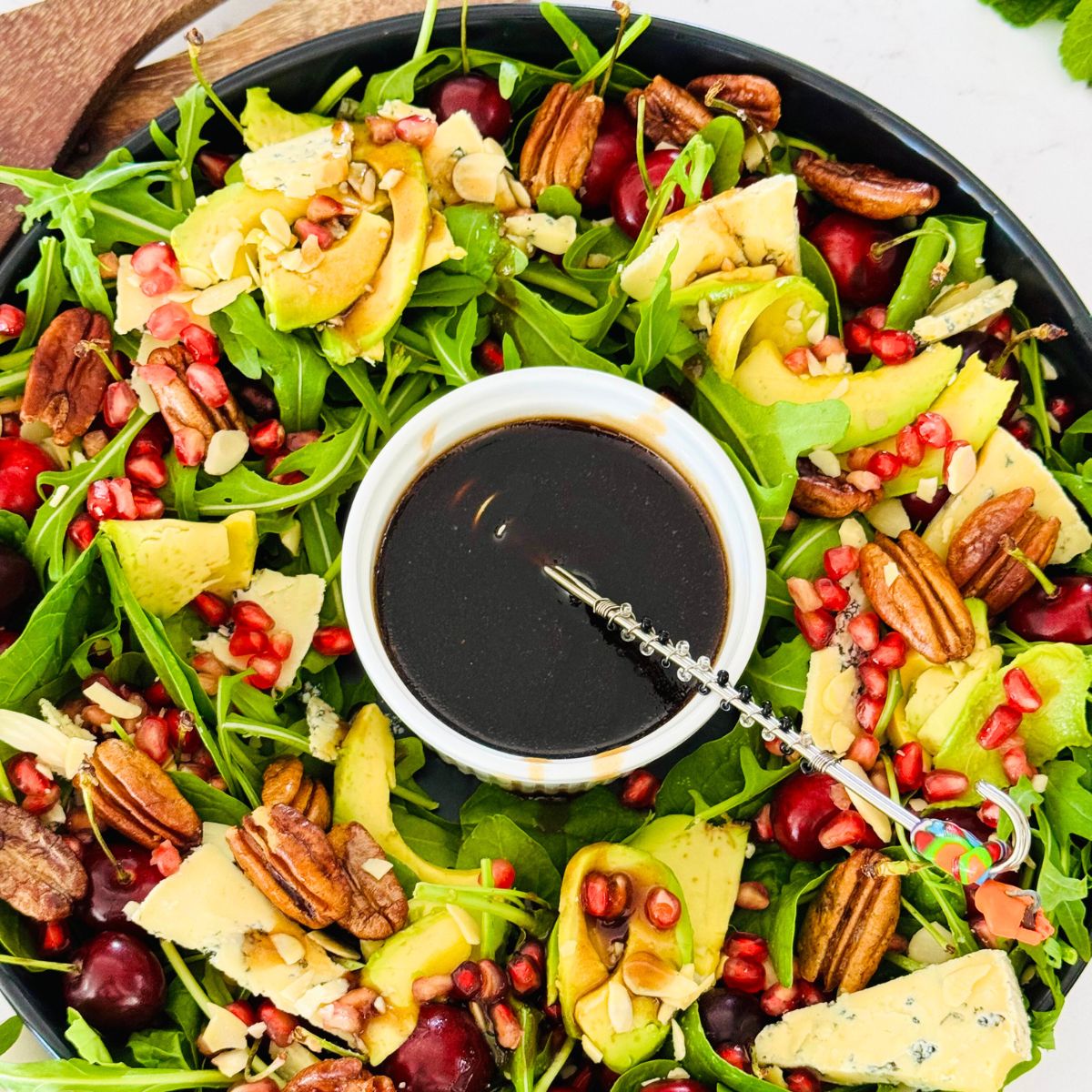
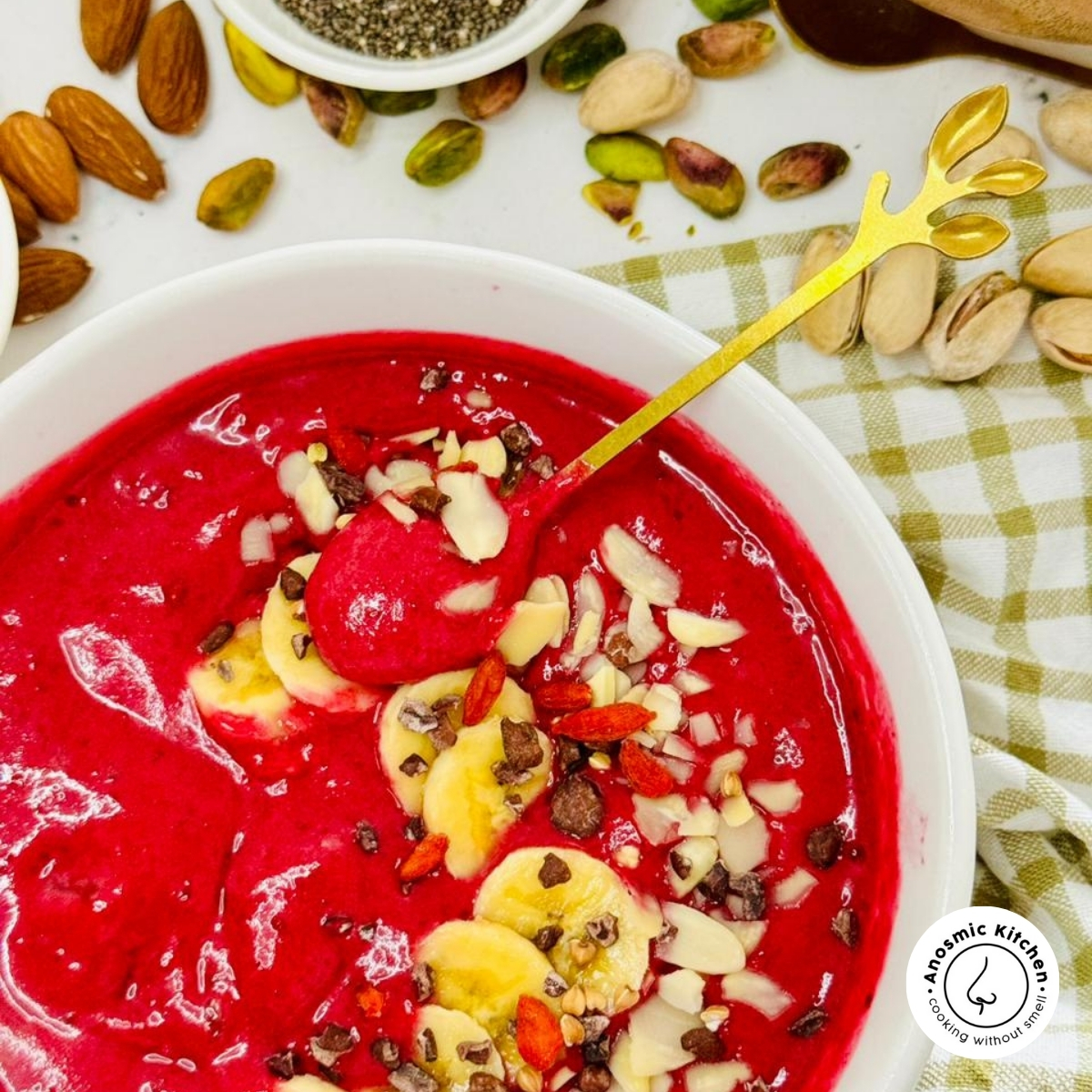
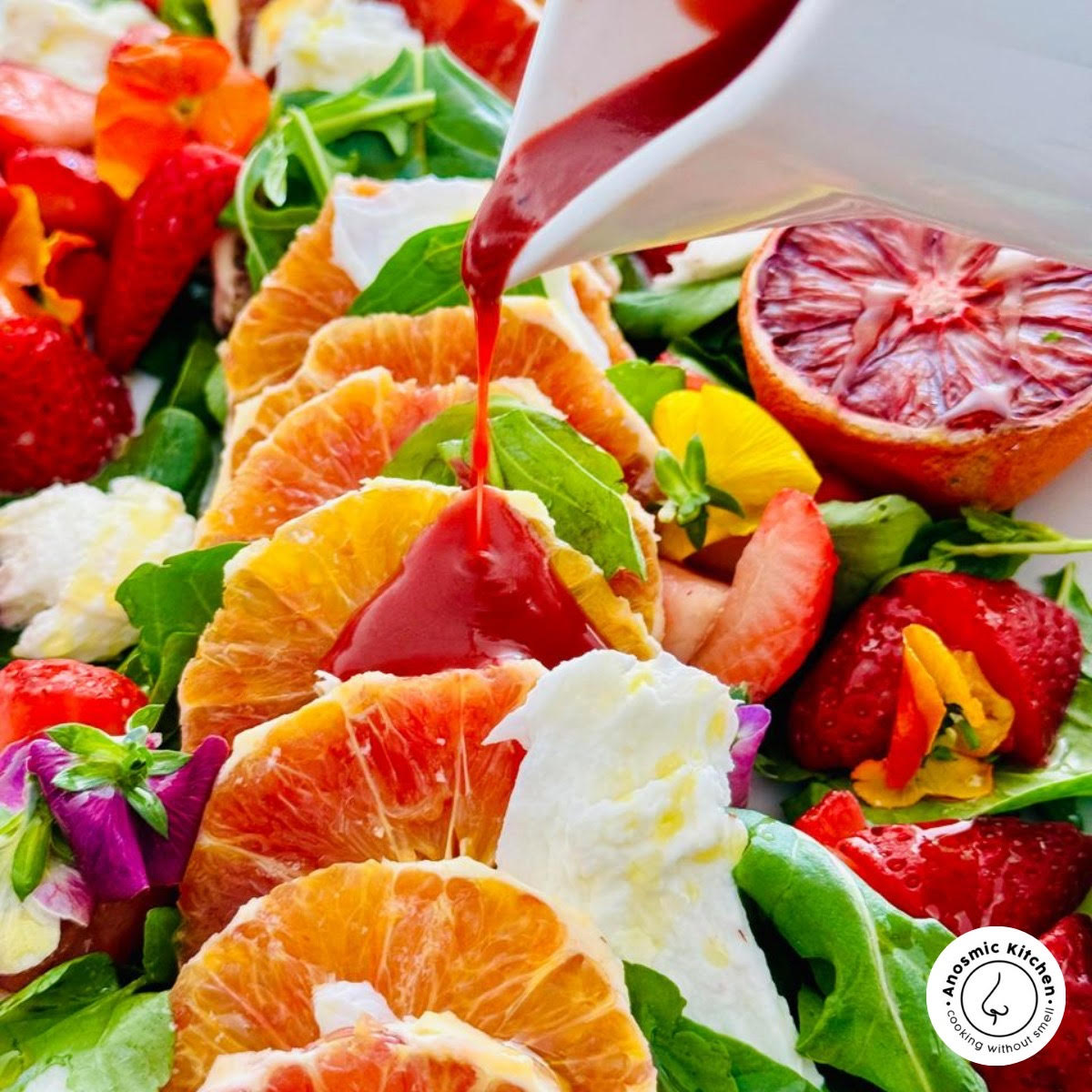
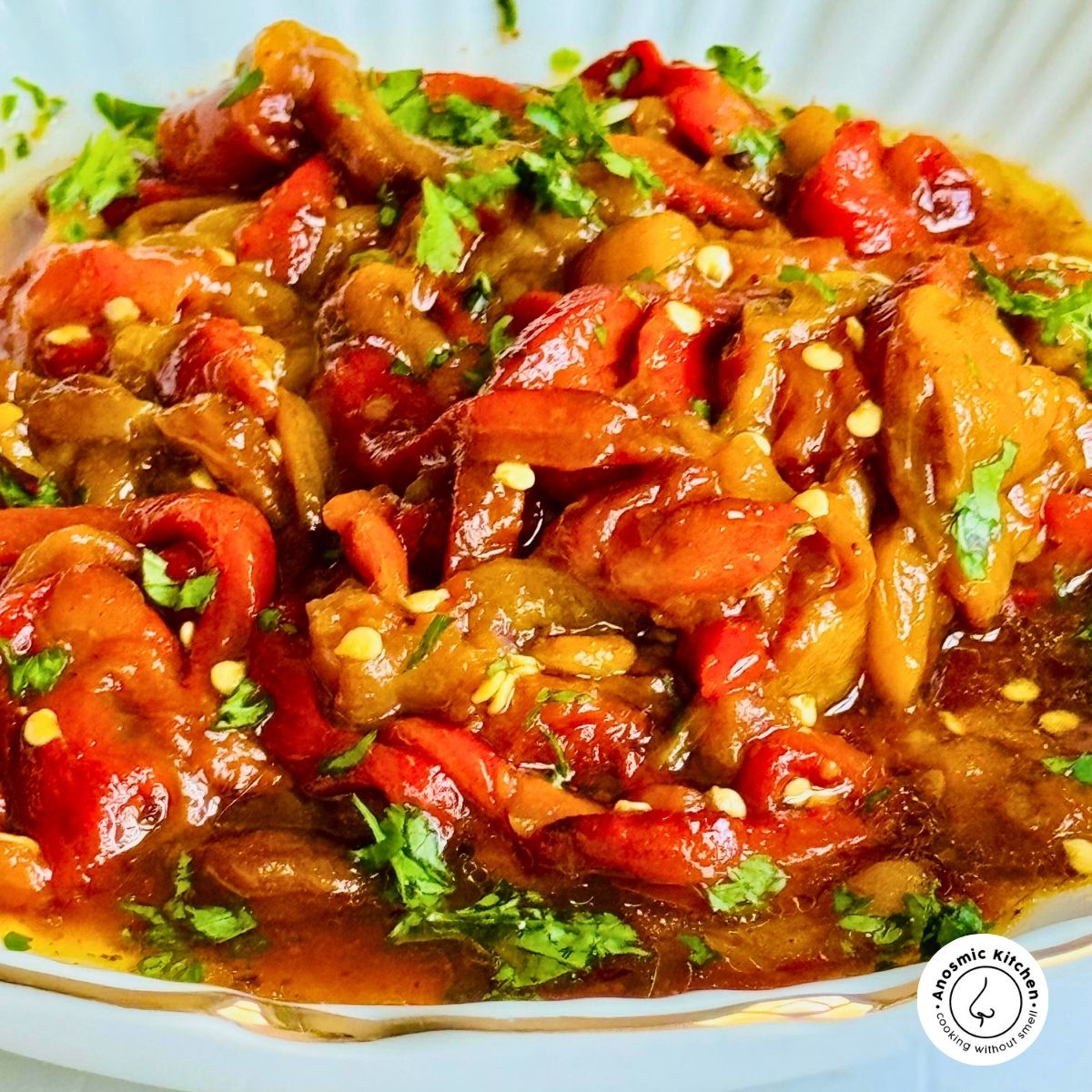
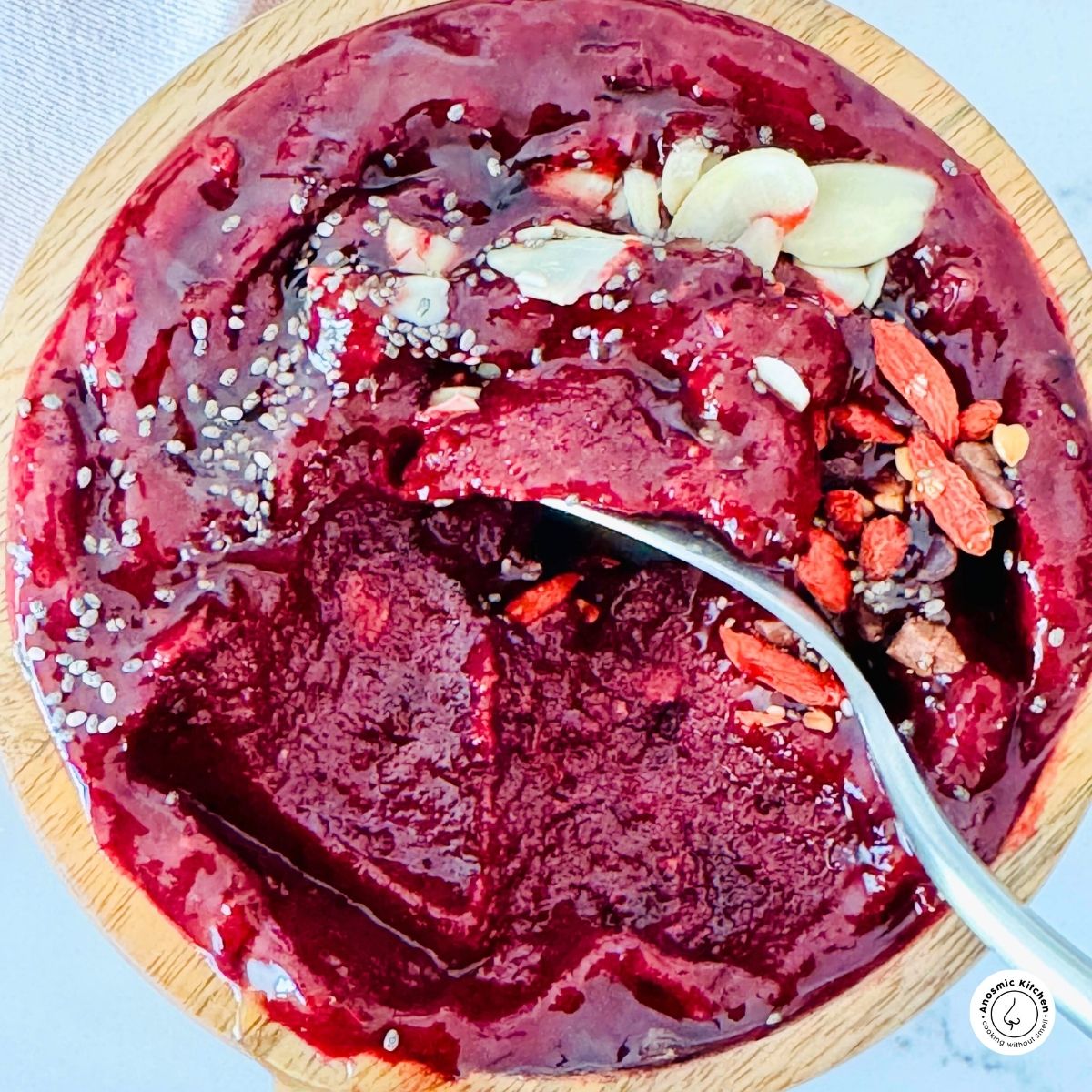

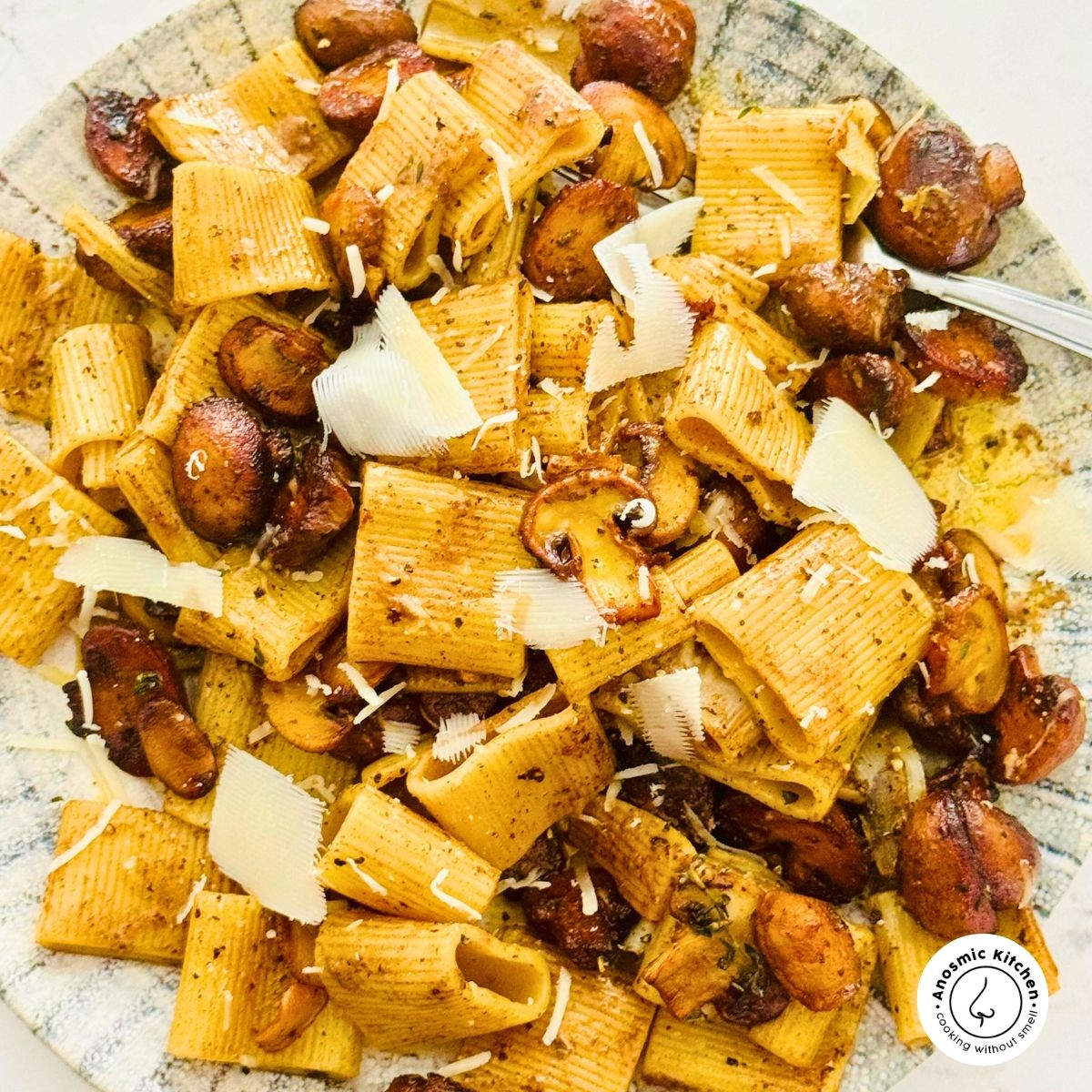
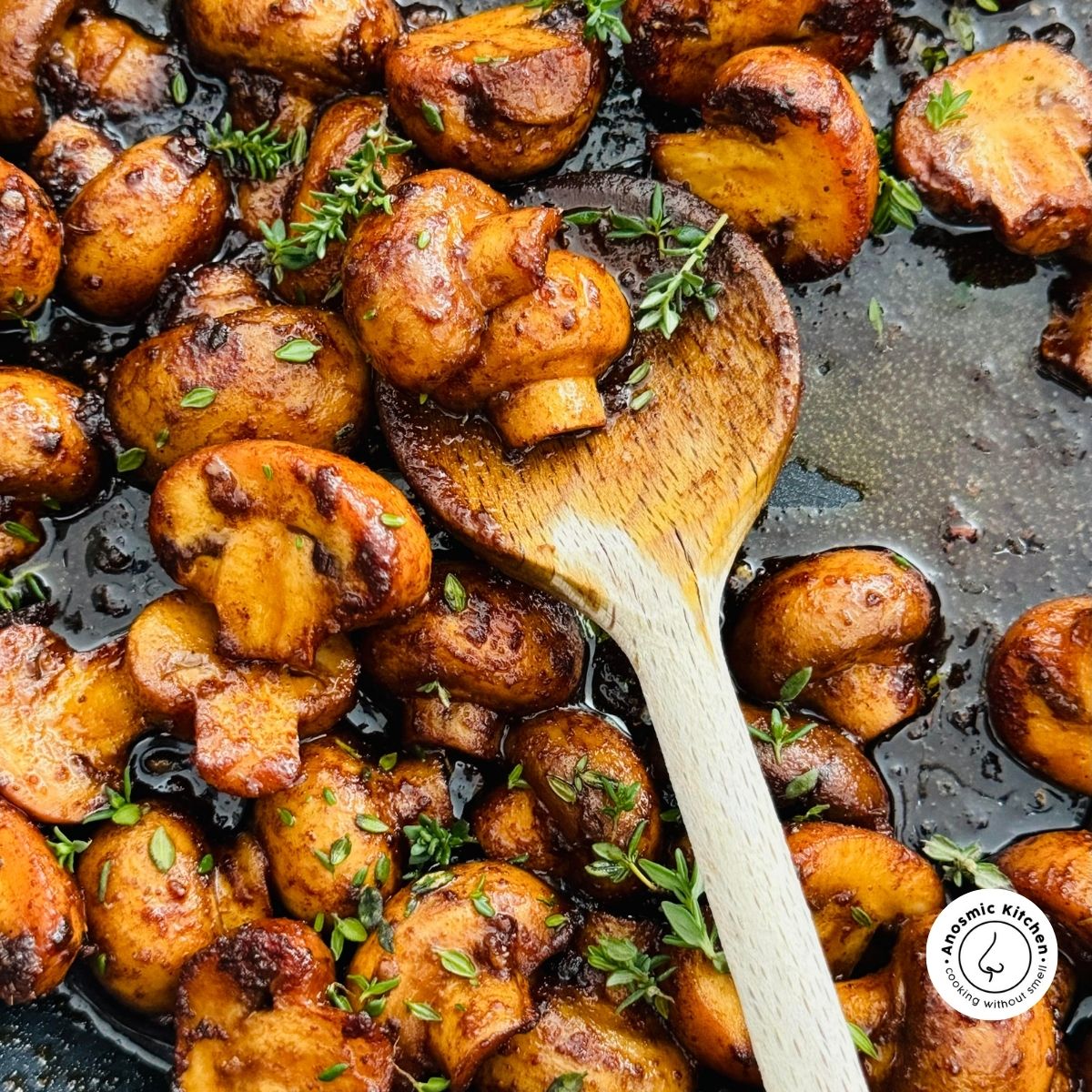
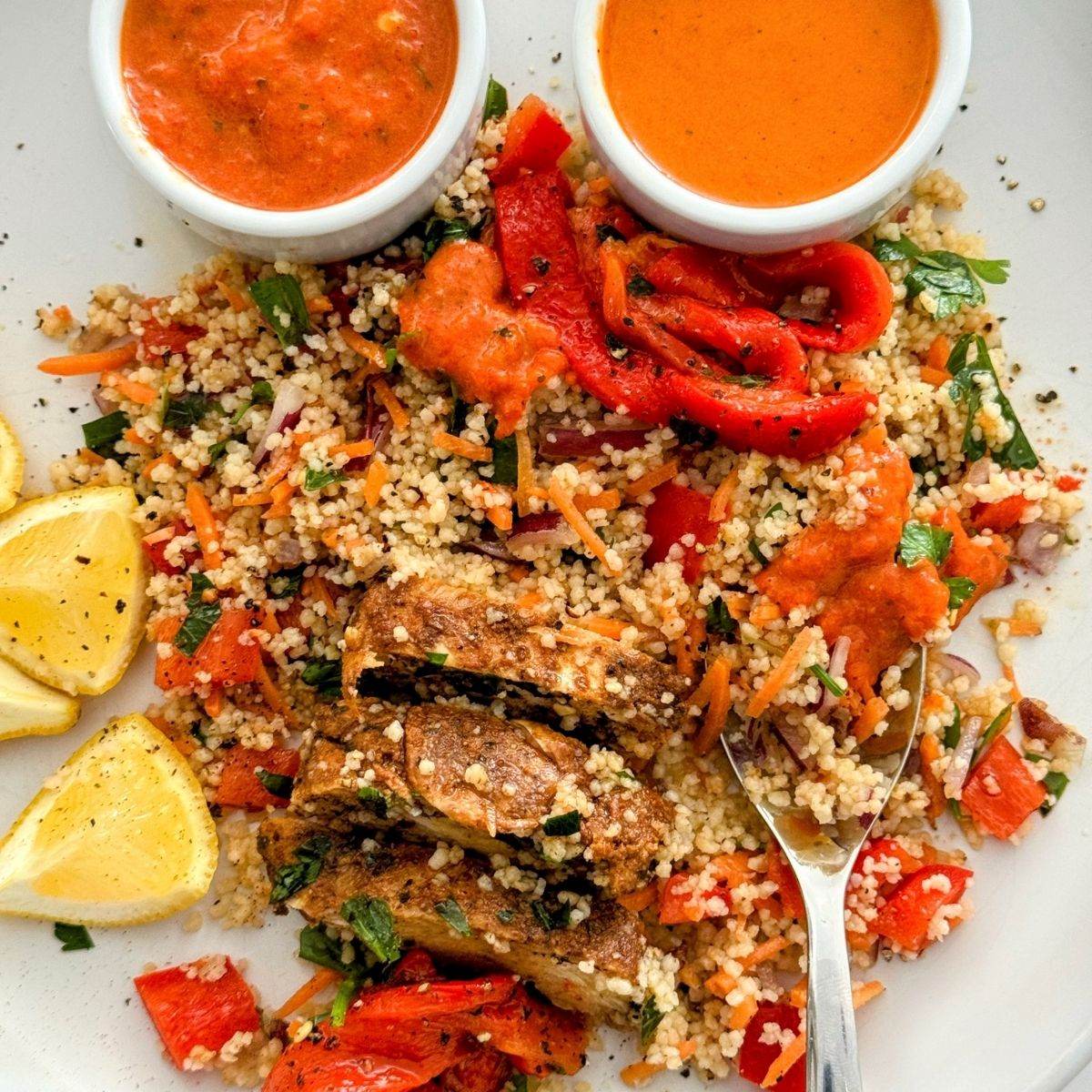


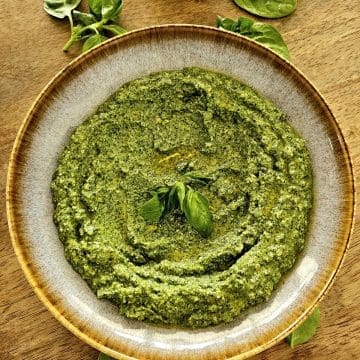
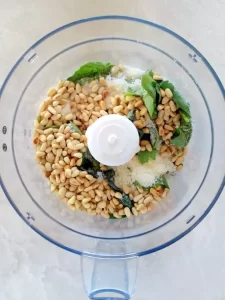
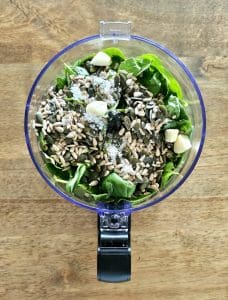
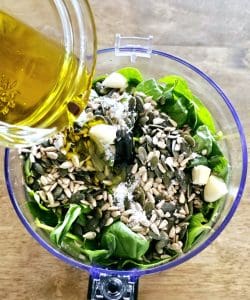
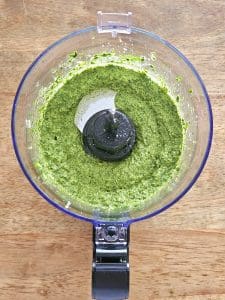
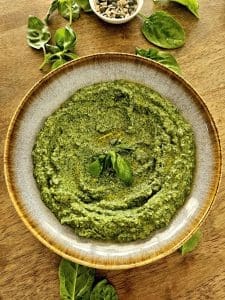
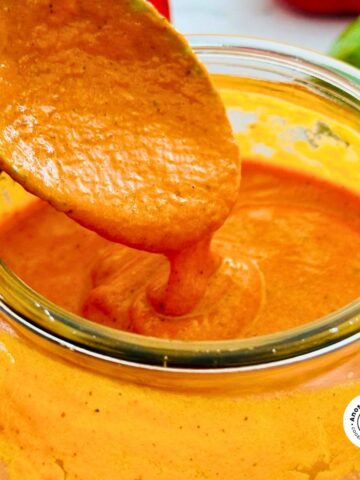
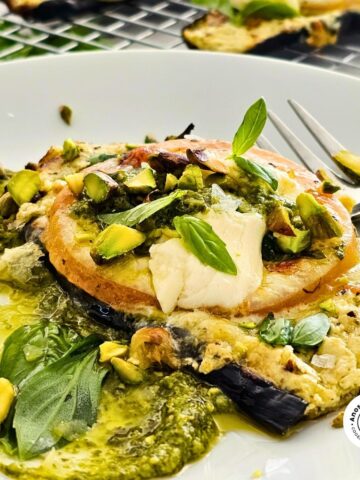
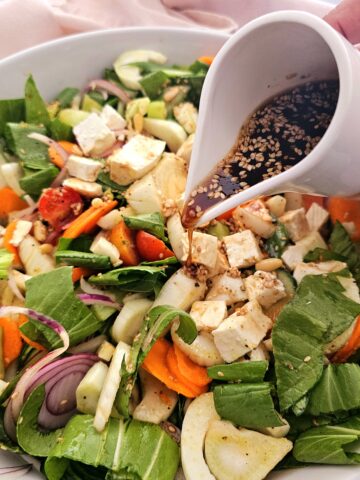
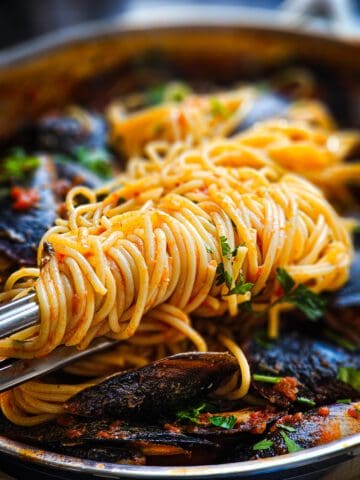
Comments
No Comments